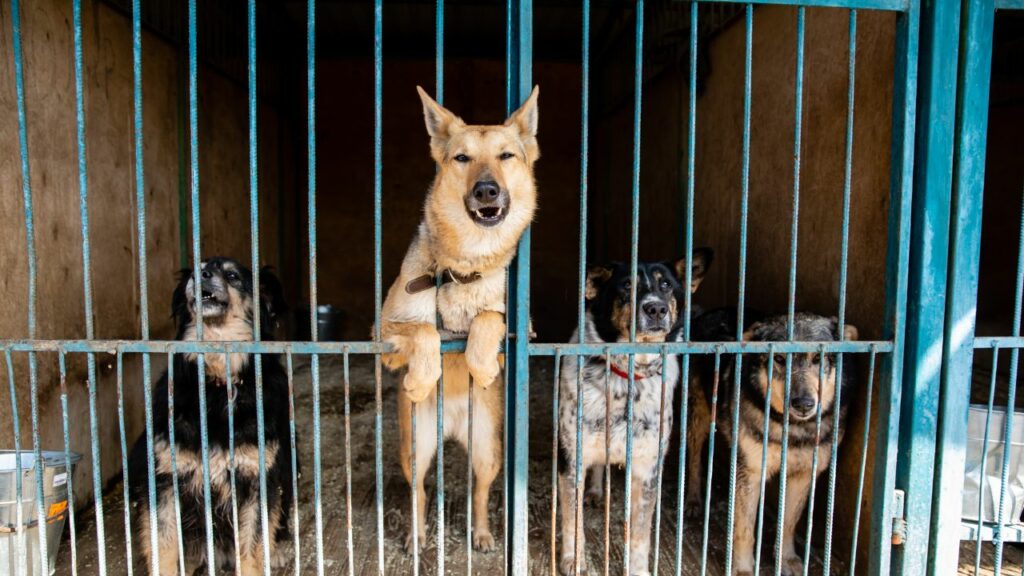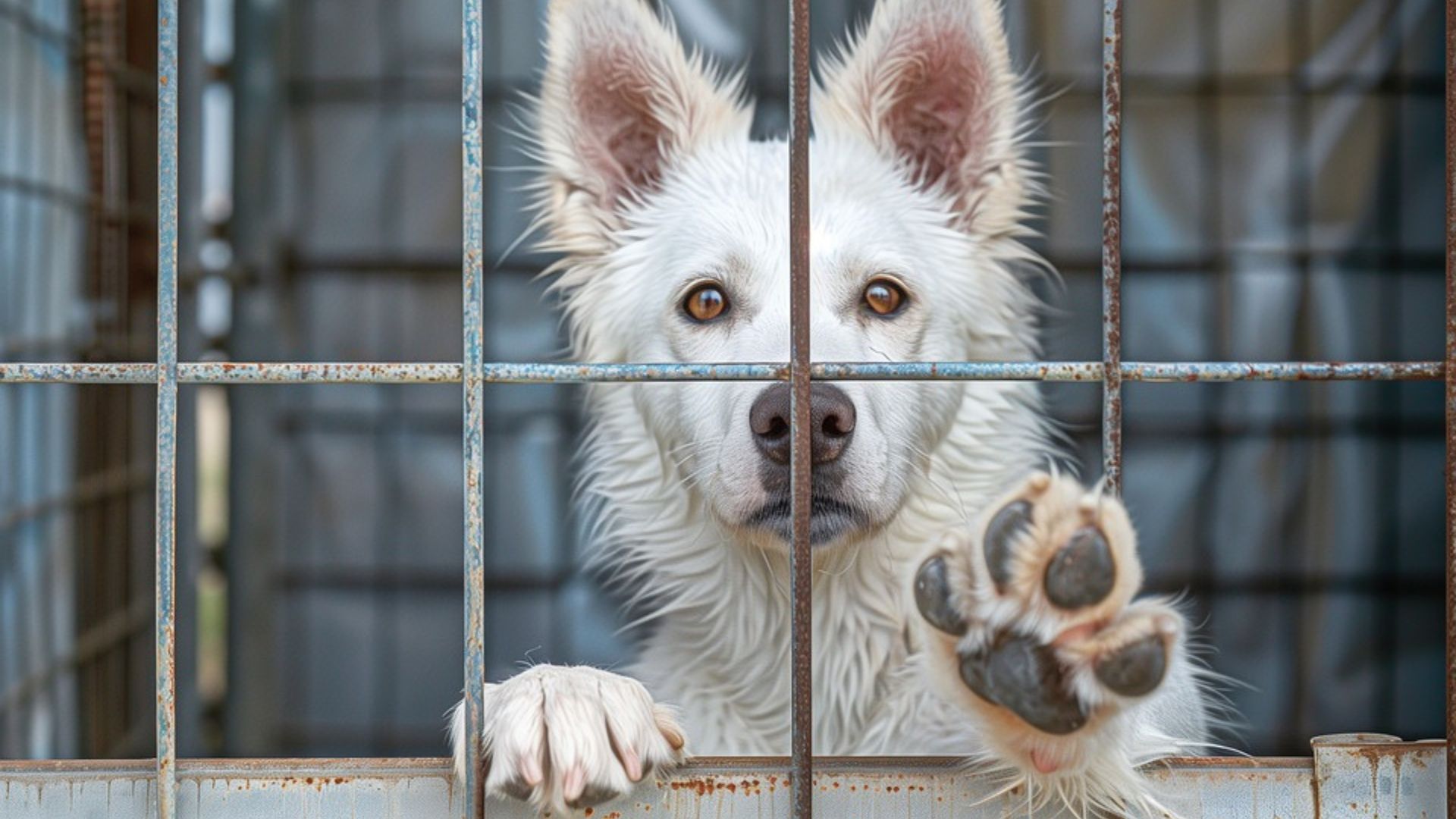The numbers are startling in America. The rate at which dogs and cats are impounded is astronomical, which isn’t an exaggeration. It’s a fact. But the only way to discuss animal shelter statistics is to be honest and factual, and this article will do both.
There is no governmental oversight of reporting shelter agencies’ statistics, so no one has exact numbers. The government will devise reports and talk about trends, but the actual statistics are left to the devices of the shelters themselves and the people who care.
Fortunately, groups like Shelter Animals Count (SAC) have shouldered the responsibility of organizing data gathered from shelters. Now, let’s delve deep into this topic… for the sake of the animals!
Why is it important to extract and organize data from animal shelters? Without it, we would have no idea how many animals are living and dying inside shelters. This information is paramount to control and (hopefully) abolish the need for animal shelters.
Simply put, it’s so the animals can be served better.
Most Disturbing Animal Shelter Facts at a Glance
- There are 4,064 animal shelters in the US.
- 6.5 million animals arrived at US animal shelters.
- 4.8 million cats and dogs are adopted.
- In 2023, 689,000 animals were euthanized.
- Some shelters use barbaric methods to euthanize animals.
- 57% of the animal shelters in the US are no-kill shelters.
- Around 25% of shelter dogs are purebred.
- More than 2/3rd of US households have cats and dogs.
Animal Shelter Statistics

According to the Latest Stats, There Are 4,064 Animal Shelters in the US (Best Friends)
In 2022, the Humane Society cited over 3,500 animal shelters across the U.S., while in 2024, BFO reported that there are 4,064 animal shelters, and 2,133 of them, or 52%, are now designated as no-kill shelters. This is a significant increase from 2016 when only 24% of shelters had no-kill status.
In 2023, 6.5 Million Animals Arrived at US Animal Shelters. (SAC)

In the year 2023, the compassionate efforts of animal shelters and rescue organizations were evident as they provided refuge for over 6.5 million animals, with approximately 3.3 million cats and 3.2 million dogs seeking care and support.
According to the latest report, in the first half of 2024, a total of 3,118,000 dogs and cats entered shelters and rescues nationwide.
Animal Shelters Cost US Citizens up to $2 Billion Yearly (One Green Planet, Petmd)
If this money was funneled into spay and neuter programs, including TNR (Trap-Neuter-Return of feral cats), and also adoption/pet education with more Federal funding, we could save many millions of more animals.
Approximately 4.8 Million Cats and Dogs(2.2 Million Dogs and 2.6 Million Cats) Are Adopted (SAC)

In 2023, a total of 4.8 million cats and dogs were adopted, with 2.6 million cats (constituting 65% of the total intake) and 2.2 million dogs (comprising 56% of the total intake) finding new families.
In 2024, dog and cat adoptions fell by 82,000 compared to the previous year, representing an overall decline of nearly 4% for both animals combined. Dog adoptions dropped by 5% in 2024, with 59,000 fewer adoptions compared to both 2023 and 2019. Cat adoptions decreased by 2% (23,000 fewer) since 2023, but compared to 2019, they have risen by 17%, totaling an increase of 157,000 adoptions.
Approximately 6,010,000 Stray Animals Entering Shelter Homes Are Returned to Their Owners (SAC)
In 2023, 6,010,000 dogs and cats left shelters alive and returned to their communities, either through adoption, being returned to their owners, or being released back to where they were found.
Microchipping Increases the Animal Return Rate (ScienceDaily)
The good news is that each year sees more people registering and implanting their animals with a microchip. According to research after microchipping, the return to owner rate was 20 and 20 ½ times higher for cats and dogs respectively. The cost ranges from $25-$75 and can save you a lot of heartache.
During COVID-19, Dog Adoptions Rose to 10-13 a Day (The Washington Post)

In June 2020, the SPCA Los Angeles, a nonprofit shelter, reported double the usual adoptions at 10-13 per day, said President Madeline Bernstein.
Best Friends Animal Society Reports a 17% Increase in Households with Cats in the Past Ten Years (BFAS)

Some of this increase is due to the rise in adoptions during the pandemic. BFAS also has key stats about cats in US households on its website.
Overall, Pet Adoptions Decreased by 20% in 2020 (DVM360)
But this statistic is tricky. As DVM360 says, the overall pet adoptions from shelters in 2020 marked the lowest figure in half a decade.
Information on how to adopt an animal is plentiful, and today, shelters are overflowing with available animals.
Shelter Animal’s Irremediably (Impossible To Remedy or Cure) Suffering Is Under 1% (No-Kill Advocacy Center)
The fact says less than 1% of the animals in shelters are irremediably suffering. This means almost all pets that enter shelters are healthy and/or can be treated and are available to be adopted.
How Many Animals Are Euthanized In Shelters Each Year

In 2023, 689,000 Animals Were Euthanized. (SAC)
Non-live outcomes for both cats and dogs are increasing. Euthanasia in shelters accounts for 9% of all animals taken in. 625,000 pets were euthanized in 2019
Almost 359,000 Dogs Are Euthanized in Shelters Annually (SAC)
This sobering statistic proves just how big the problem of overpopulation of animals is. How do we stop this travesty? Adopt, adopt, adopt!
330,000 Cats Are Euthanized in Shelters. (SAC)
More cats enter shelters yearly, so this statistic makes sense.


The Number of dogs Being Killed Is More than cats (SAC)
While non-live outcomes are increasing for both cats and dogs, more dogs were euthanized compared to cats.
Five US States Involved in Almost 50% of Dogs and Cats Killing in the US (Best Friends)
The top five states (California, Texas, North Carolina, Florida, and Louisiana) have a combined total of 322,251 dogs and cats killed each year, which is 52% of the nation’s total.

In 1984, 17 Million Shelter Animals Were Killed in America (Best Friends)
These statistics prove we’re moving in the right direction. This tells us how much progress is possible. The solution is solely up to us.
Some Shelters Use Barbaric Methods to Euthanize Animals (PETA)
Some shelters in smaller communities euthanize their animals by shooting them. Also, the archaic method of using a gas chamber to kill dogs and cats is still alive in many states.
Latest Stats Reveal Using a Gas Chamber as a Method of Euthanasia Is Banned by 29 States (Humane Society)
Previously, the number was 27, and now in 29 US states, the gas chamber method of euthanasia is banned.
3 out of 4 Americans Are Against Euthanizing Animals (No Kill Advocacy Center)
A greater number of Americans are against shelters killing animals, which tells us we need to put action behind our words.
No Kill Shelters
Delaware Became the First No-kill US State in 2019 (USA Today)
Fortunately, at least one state takes the problem of pet overpopulation seriously by taking positive action to care for animals.
No-kill Shelters Try to save 9 out of 10 Animals (NPR)
No-kill shelters are allowed to kill 10% of their animals due to health issues.
Animal Activists Want to Make the US a No-kill Zone by 2025 (BFAS)
Best Friends Animal Society started the movement to save all shelter animals decades ago. “It was 1984, and some said we were crazy.” (BFAS) Ironically, the doubters are the ones who do very little to reach this goal.
57% of the Animal Shelters in the US Are Currently No-kill Shelters (Best Friends)
The percentage of no-kill shelters in the US has more than doubled over the past seven years, rising from 24% in 2016 to 57% in 2022. Currently, about 43% of US counties are no-kill.
In 2021, 93% of No-Kill Shelters Upheld Their Dedication to Abstaining From Euthanizing Pets. (Best Friends)
The increasing number of no-kill shelters proves that it’s possible and sustainable to save every healthy and treatable pet.
Pet Overpopulation Statistics

The Major Reason for Euthanasia Is Overpopulation (Animal Law)
There are simply too many homeless animals in America. Our response to the issue has been to get rid of them.
Only about 10% of Animals Brought to Shelters Are Spayed or Neutered (Do Something)
This statistic shows the intense ignorance and irresponsibility the greater population shows!
Around 25-30% of Shelter Dogs Are Purebred (Best Friends)

It is reported that 25% to 30% of the shelter dogs are purebred dogs.
No-kill Shelters Can Become Overpopulated (PETA)
PETA has preached this for decades, and rightly so. Overpopulated shelters can lead to extremely poor conditions for the animals including: Neglect and abuse of them and even killing them
Pet Abandonment Statistics

“Pets are relinquished to shelters for reasons related to the owner’s circumstances at roughly a ratio of 3 to 1 as compared to reasons specific to the animal. Unlike what many may believe, the animal’s behavior is not a leading reason for surrender.” – BFAS

More than 2/3rd of US Households Have Cats and Dogs (BFAS)
This statistic leads people to believe there’s not much of a problem with abandonment, but that would be a false belief, as seen by the statistics of those who are surrendered.
25% of Animals Are Left in Shelters by Their Owners (SAC)
This is a significant number, and it can be due to various reasons such as financial problems, lack of time to care for the animal, moving to a place that doesn’t allow pets or a change in lifestyle.
Having Too Many Animals Is the Primary Reason for Pet Abandonment (Best Friends)

Animal hoarders take up too many pets without having the basics they need to care for them. As a result, pets are given up and end up at shelters.
7–8% of Dog and Cat Owners Leave Their Pets When They Move to a New Place (Petfinder)
People who shift their homes for work or any other reason are forced to give up their pets most of the time.
Many Pets Entering Shelters Have Been Owned for Less than a Year (Petfinder)
Most dogs need three days to get acclimated to being in a new place. Most pet owners don’t give their pets time to adjust.
Pets as Gifts Are Most Likely to Be Abandoned (PawShake.co)

It is estimated that around 80% of rabbits purchased as Easter gifts end up being abandoned, surrendered to animal shelters, or rehomed to other families.
This makes perfect sense. It’s never a good idea to give someone a pet. Even if you know someone who wants a German Shepherd, she may not like the one you choose for her. A better idea is to take the person to a shelter to meet animals face-to-face.
What Can We Do to Help?
You can make a difference, even if only for one animal, by donating money, time, or in-kind donations (blankets, dog and cat toys, food) to any of the organizations listed in this article.

If you’d like to go big, sponsor a radio ad to support spaying and neutering or your local no-kill shelter. Here are additional ways to help shelter animals.
- Never Purchase an Animal from a Breeder
- Volunteer or educate yourself on Community Cat Programs/TNR (Trap-neuter-return)
- End Breed Discrimination
- Stop Puppy Mills
- Check sources for Spay/Neuter Programs and Awareness
FAQs
How Many No-Kill Shelters Are in the US?
There are 4,064 shelters in the U.S., and 52% of them are considered no-kill shelters.
How Many Dogs Are in Shelters?
In 2023, 3.2 million dogs entered shelters and rescues.
How Many Animals Are Euthanized in Shelters Each Year?
Each year, around 920,000 animals are euthanized in shelters.
In Conclusion
Animal shelter statistics reveal significant trends in animal welfare and pet ownership. The American Veterinary Medical Association and the American Pet Products Association highlight the issue of homeless pets and animal abandonment, with many mixed-breed dogs entering shelters in 2023.
Despite a rise in no-kill shelters, 920,000 animals are euthanized annually, reflecting ongoing challenges. Sheltered animal statistics show a critical need for dog owners to adopt from shelters to reduce animal homelessness and the number of dogs killed. These pet statistics underscore the importance of comprehensive pet population study to improve outcomes for homeless pets.
We’ll never know exactly how many animals are dying at the hands of human beings. But we can be a part of the solution to help these wonderful creatures stay alive and find forever homes.
If you’re a lover of animals, there’s so much you can do to help those in shelters. Give, give, give to help homeless animals in your area. They’ve been forced into a situation they don’t want to be in.
Let’s help them ease the burden by giving them our hearts.


